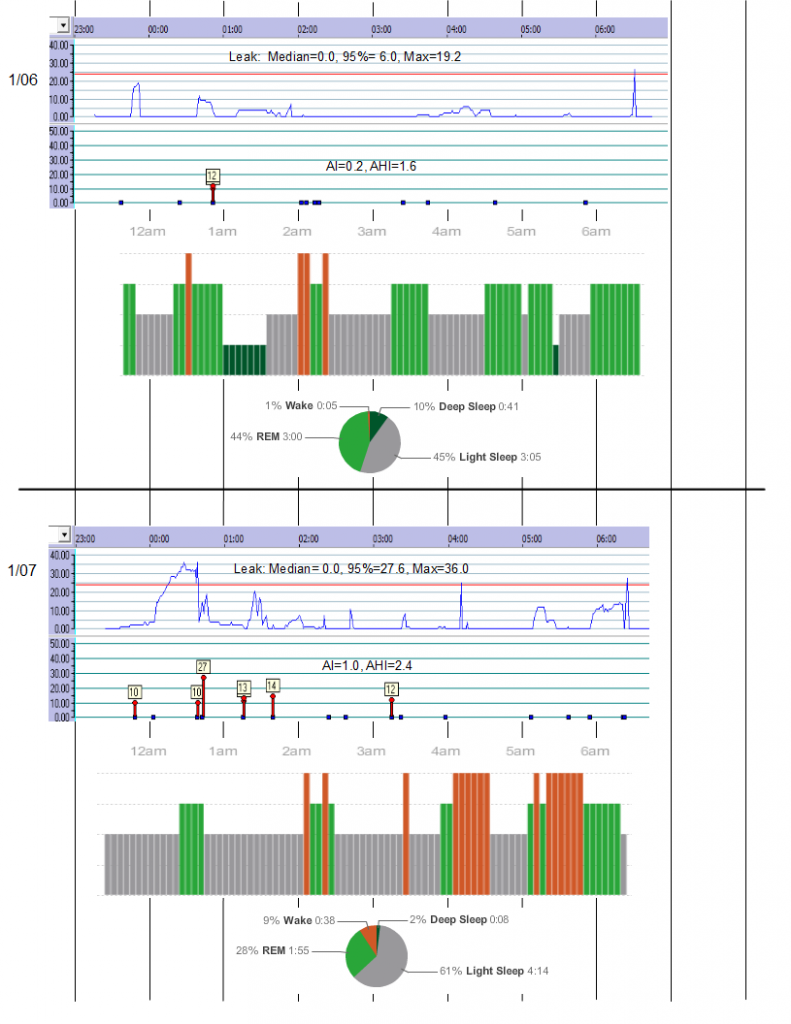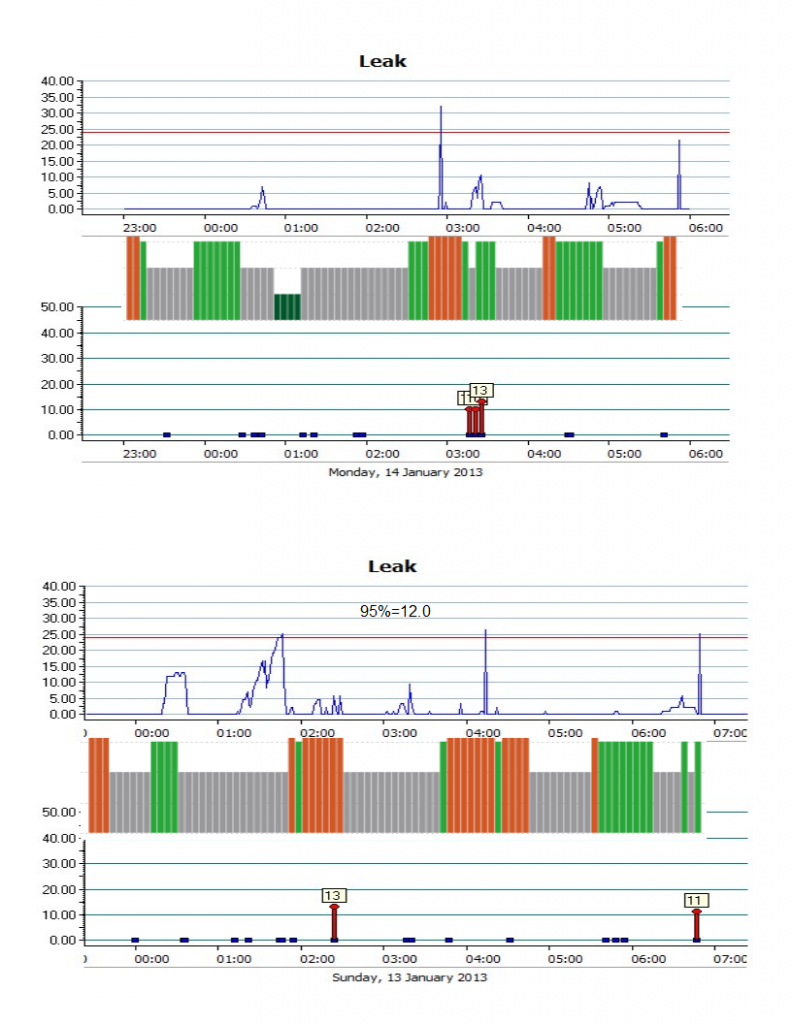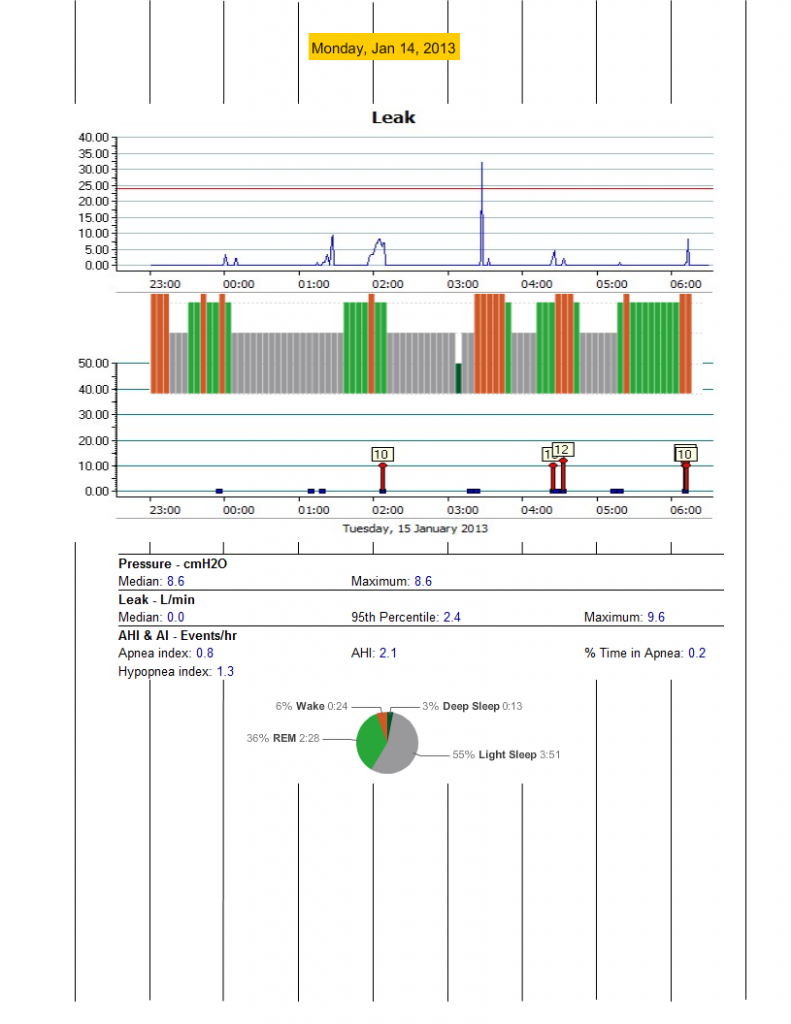Below are the results of two consecutive nights sleep. I think it is a good example of how relatively minor leaks can produce disturbed or non-restorative sleep. What makes this example especially good is that the daytime activity of both days was nearly the same, including meals. Being consecutive is also a plus. Two consecutive mirror image days tend to rule out unknown variables skewing the results.
Both nights have relatively good AHI's, 1.6 compared to 2.4. Both are quite acceptable by the standards we are used to. The leaks of the first night are great. The leaks of the second night, not so good, but certainly not really terrible. The second night's leak line only crosses the dreaded “red line” for about 20 minutes the whole night. That coupled with the relatively “good” AHI of 2.4 might make one wonder why they felt so bad in the morning (which I did).
Now look at the second night's apneas. Most seem to be related to the leaks. Did they occur because the CPAP pressure was too low or couldn't compensate for a loss of pressure due to the leaks? Or, are they the apnea of one holding their breath because the leak disturbed them? Don't know. Probably both. Either way, an increase in AHI seemed to occur with an increase in leak level.
Finally, look at Zeo. The major leaks and apneas of the second night occurred right where there should have been Deep Sleep, but the disturbance wouldn't allow it. Consequently, only 8 minutes of Deep Sleep was recorded compared to 41 minutes the night before.
So, what it looks like to me is that a relatively small increase in leak level with a relatively small increase in apneas wiped out most of one night's restorative sleep. I believe this illustrates the importance of really good leak management and may explain why some still feel fatigue even with “good” numbers.
J













